In Medellin, Colombia, the call to violence, prostitution and gang activity can be overwhelming for youth with limited options after school. The Eskeula 4 Elementos is a sanctuary in the middle of it all, offering lessons on hip hop, rap, DJing and graffiti art.
Seattle journalist Christan Leonard reports from South America.
MEDELLIN, Colombia–Henry Arteaga could have been a drug dealer.
Growing up during the 1990s in Aranjuez, long one of the most dangerous neighborhoods in Medellin, Arteaga could have been a soldier, a gang member, an insurgent, or followed any number of violent paths which have attracted Medellin’s youth over the last 30 years.
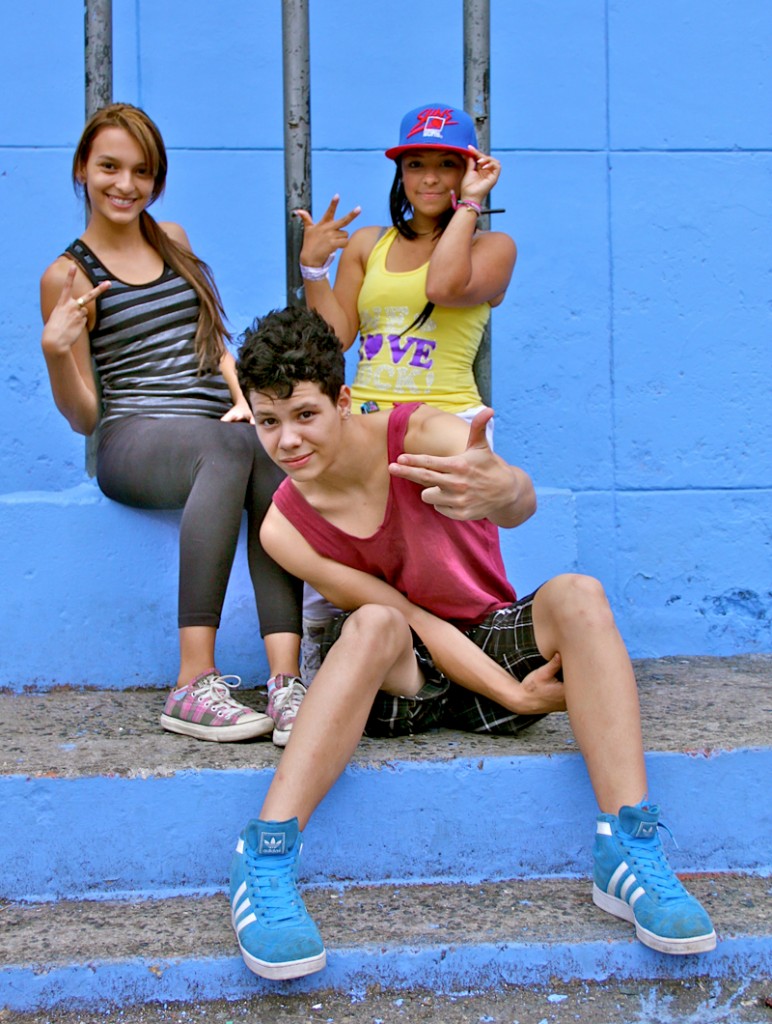
But Arteaga was lucky: he found hip hop.
Over the last decade, the multi-talented musician and dancer has used his skills in Medellin’s street arts to build a successful career for himself and has also become one of the most prominent voices for peace in his community.
Arteaga, or “Jke” as he is known in the hip hop world, is the frontman and one of the founding members of the musical group Crew Peligrosos. He is also the co-founder and director of the Eskeula 4 Elementos (4 Elements School), a project he started in 1999 to teach youth the same arts that had saved him from the violence which engulfs his city.
At the evening school, more than 16 teachers volunteer their time teaching break dancing, graffiti, percussion, rap, DJing and the history of hip hop to more than 400 students from Aranjuez and the surrounding neighborhoods.
“I focus on hip hop because it is a type of music in which I can express what I feel and what I think,” Arteaga said. Medellin’s street arts also helped Arteaga learn about and engage with the world around him.
“I started breakdancing because it has an element of impact and impression which motivated me to study and investigate,” he said.
[youtube=http://youtu.be/phIT8n9-Ung&w=560&h=315]
Youth from Crew Peligrioso compete in this “Hip4” breakdancing show.
Countless groups in Medellin have used hip hop as a tool for social development since local legend El Mocho founded the first hip hop school in Medellin in the late 1980s. But few if any have done so with as much success as the Eskuela 4 Elementos.
“4 Elementos and Crew Peligrosos are not the founders of the idea of school hip hop groups,” Leo Naturalemente said, one of the creators of Cultura y Libertad, another one of Medellin’s largest hip hop organizations. “But they did achieve another level of management and organization. 4 Elementos is a benchmark in terms of organization, relationships with private enterprise, linkages with the state, and artistry.”
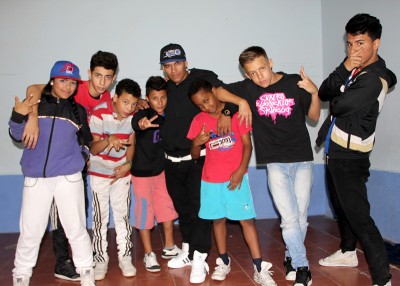
Unlike many of the other groups in the city, the school is not a network but a centralized operation, directed by Arteaga.
It is one of the few hip hop organizations in the city which actually has a permanent building and set schedule, giving many students a taste of regularity and discipline in their often chaotic lives.
Although the school turns no one away, youth must observe a high level of discipline. Students are expected to show up clean and prepared, must address their teachers with respect and show they are putting effort into their regular school studies.
Sixteen-year-old Daniel Tamayo has been attending the school for more than nine years and is not deterred by the rules.
“Jke (Arteaga) has always been very strict concerning school,” Tamayo said. “He says it is essential to study because it is something that can also help us later in life.”
But Arteaga’s goals are spiritual and cultural as well as practical. “Through music we generate hope to learn how to live and survive,” Arteaga said. “Through hip hop they (the students) can see another way of life and because they can focus on this alternative life that we have provided them, they can experience new things, learn discipline and the importance of perseverance. Also they can begin to learn through the arts the roots of our culture, where we came from, our present, and how to denounce it.”
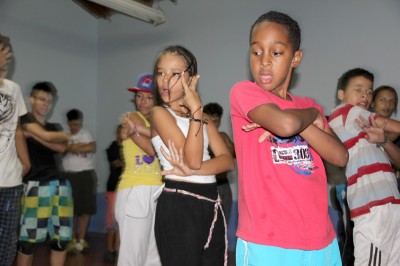
The school has been a saving grace for some of the teachers as well as its students. Julian Andres Agudello, or Zkillz, a dance instructor at the school, said he owes his life to hip hop and sees his own struggle mirrored in his students’ lives.
“I decided to do hip hop and breakdancing because it took me out of everything that existed in the 90s; violence, drug addiction, it was like a lifesaver for me,” Zkillz said. “I came here and I forgot what was happening in the street (…) Without it I would be in jail, I would be stealing or doing other things that I really did not like doing but did to survive.”
The staff’s faith in the transformative power of hip hop is infectious and the kids’ dedication to both the school and its director is strikingly evident. Although most classes do not start until 7:00pm, many students come right after getting out of school and finish their homework as quickly as possible so they can practice their routines together or get advice from their mentors and idols.
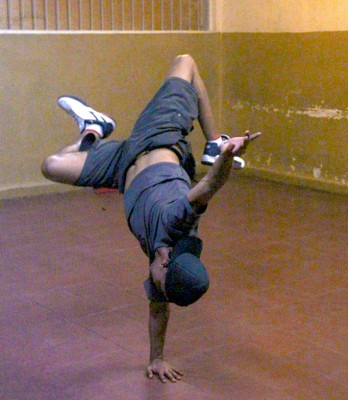
The youth, some as young as eight, show off their skills in one-armed handstands, back flips, head spins, and complicated twirls in which the dancer’s legs swing around like a windmill.
Angie Delahoz, a fifteen-year-old girl from the barrio, has only been taking dance classes at the school for a year, but sees the school as a second home. “I’ve learned so many values and I’ve been familiarized with all types of art,” Delahoz said. “This is the best place I’ve been in my life, it’s the best experience I believe I’ve pursued. Henry is like a dad for the whole school, we all feel very dear to him. It’s a school but more than a school it’s a family.”
The dedication of its staff and Medellin’s improved security situation has allowed the school to grow from a dozen participants to more than 400 different students on a weekly basis. However, occasionally violence in the area heats up and the school’s attendance may drop below 100 some weeks as students are prevented from crossing barrio lines into Aranjuez.
The area directly around the Eskuela feels safe, largely due to the positive presence of the school itself. However, a few blocks walk in any direction reveals Medellin’s thriving underworld of drugs, gangs and prostitution. The fight to keep youth out of these dangerous but often lucrative industries is neverending.
Despite these struggles and setbacks, Arteaga and his fellow teachers are not discouraged and are hopeful for the future.
“In the era of the nineties, it was very difficult and risky for everyone, especially the youth, to fall into the violence present in this place,” Arteaga said. “Now the violence has not gone away but life in the neighborhood has progressed (…) We love the neighborhood and we believe this is our engine which allows us to move forward.”


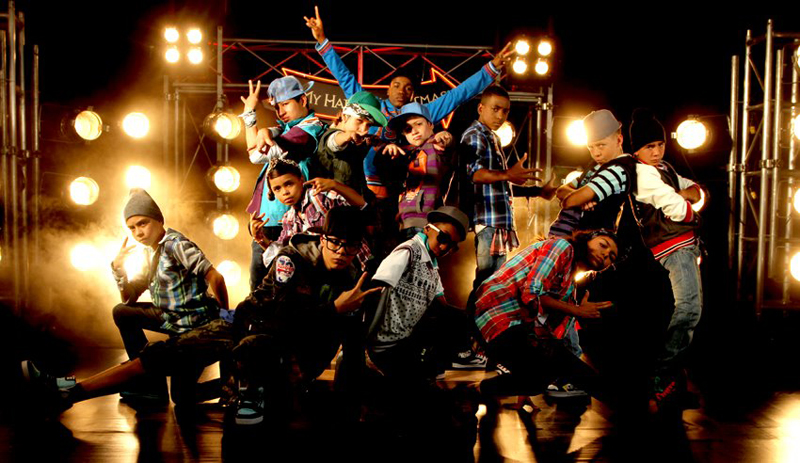
Actually , i am a student, this school campus is so good.
hi chris first let me congrat you for such a good work, I would like to get contact with you and arrange a meeting to see the possibily of a report about the development and learning of english language with the youngs in the comunas of medellin, even i am teching this language to the poorest population, but of course ut has been hard, so please this is my phone number 521 48 89( office-home) 300 393 39 52 ( cell phone) thanks for a soon contact.
Hi Luis,
I am sorry but I did not see your comment until just now. I am no longer in Medellin but if you still wish to contact me you can reach me at christanl123@gmail.com.
Best,
Christan Leonard